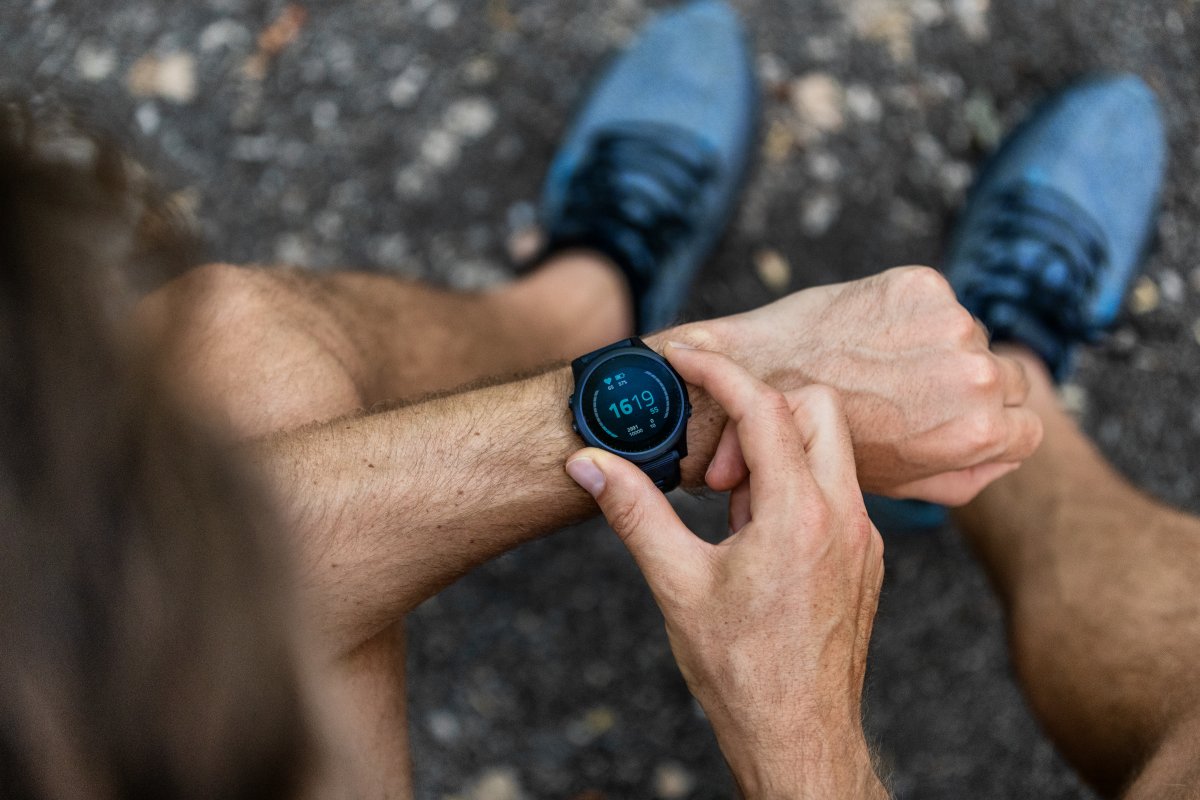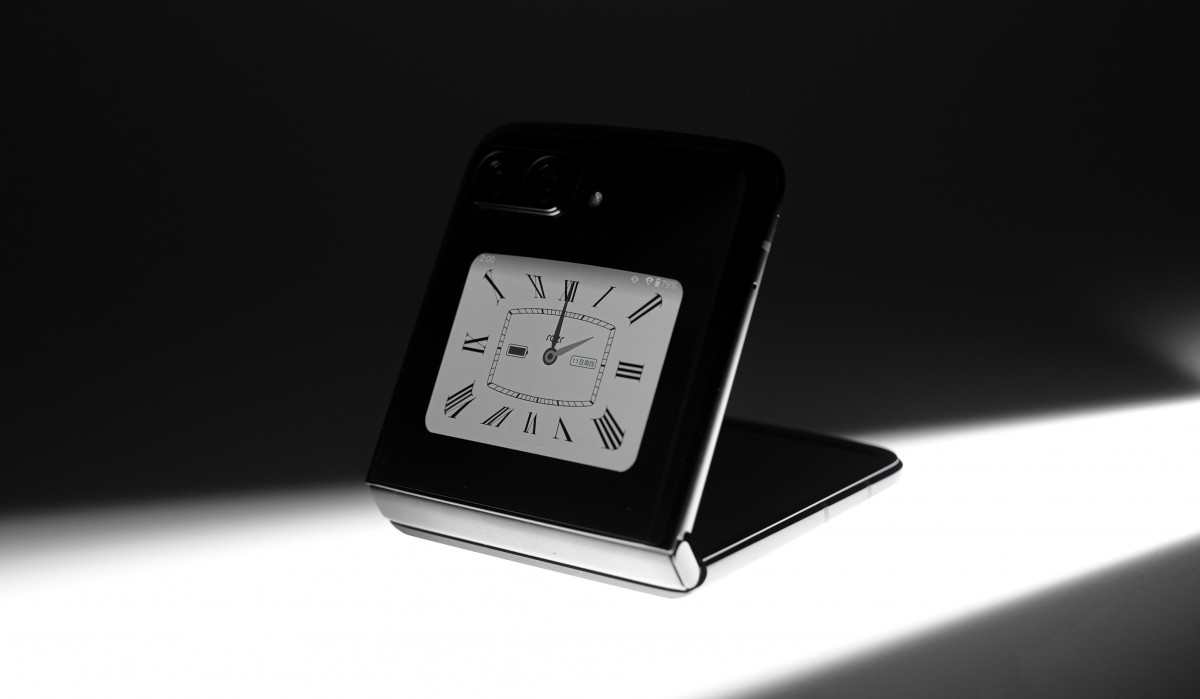
Smartwatches and fitness trackers deliver a large number of measured values. But which sensors do the wearables need for this? And how accurate are the measurements?
How am I? Well, you will probably know that, right? In fact, many people don’t have a particularly high level of body awareness. Sensors in devices that are worn on the body, called wearables, are supposed to help. Many watches today have a heart rate monitor, try to measure sleep and count steps or minutes in which you are physically active. We explain which sensors are involved and how they work.
How does a wearable count steps?
The first activity trackers started with a simple step count. A motion sensor is responsible for this basic discipline – and a lot of mathematics. How do you measure movement? This is done with acceleration sensors that break down movement in space into its three spatial components. Thus, hopping will produce large values of acceleration in the Z-axis, while sprinting from a starting block will produce values in at least one horizontal direction, as well as in the vertical direction when jumping up. You can do a lot with that: Steps generate a different value pattern than the relaxed swinging of the arms or shaking of the wrist when typing a text. If you then let your arms swing as you walk or put your hands in your pockets, it is difficult to recognize both as walking.
Is that accurate at all?
Initially, the step-detection algorithms were easy to outsmart. For example, you could put Tracker in a stand mixer, which turned to increase the number of steps in no time. This got better when better sanity checks came into play: It’s simply impossible to walk 5,000 steps in two minutes. An algorithm recognizes the type of movement even better if it also receives data from a gyroscope. It detects rotational movements. As a rule, the gyroscope and acceleration sensor are combined in a single housing. In the fitness watch Fitbit Sense, for example, it is a Bosch BHI160B, which measures around 3 millimeters in edge length and just under one millimeter in height.
With movement and gyroscope data, a number of wearables can also recognize types of movement such as cycling or workouts and distinguish between running and walking. As far as absolute accuracy is concerned, the devices still differ, the quality of the algorithms differs. If one fitness band counts 10,000 steps, another shows 9,000. Although precision is desirable, it is always sufficient to estimate whether you were more active today than yesterday and at what level you are.
How does a wearable measure heart rate?
Traditionally, the pulse is measured by recording the pressure wave of the blood pumped through the blood vessels by the heart. Without electronics, you can feel the pulse wave with your fingers on your wrist. In the early days of running computers, chest straps were common, which worked like an ECG and used electrodes. They record the R-pulse (i.e. the highest deflection of a pulse wave in the ECG) and count these peaks. The skin resistance must be low for this, so the sensors must be moistened. An advantage of this method is that a sensor on the chest measures with less delay than other methods.
The most used method today is optical measurement with PPG sensors. PPG stands for a process called photoplethysmography. The light from one or more LEDs on a wearable penetrates the upper layers of the skin. An optical sensor, usually in the form of a photodiode or phototransistor, responds to the reflected light. A blood vessel through which a strong flow occurs in a pulse wave reflects the light differently than that of a vessel in the pulse pause. In the past, optical heart rate monitors were mainly equipped with LEDs for red or infrared light. Infrared components are also present in sunlight, and they interfere with the measurement outdoors. Manufacturers have therefore started to use green light, which is very strongly absorbed by the blood pigment hemoglobin, at least for support.
Can you also measure blood pressure with a wearable?
When measuring blood pressure, a cuff is usually applied, which is first inflated in order to gradually squeeze an artery. A counter-pressure is built up in the artery, and the pulse wave can be detected from a certain pressure – they can be heard with a stethoscope through Korotkow sounds. As long as the cuff squeezes the artery completely. The two values mark the known corner points for blood pressure. The medical technology manufacturer Omron has implemented the principle of the blood pressure monitor in cuffs in its Heart Guide watch. An inflatable wristband takes over the task of the cuff.
Other wearables measure blood pressure using the pulse transit method. Because she needs measured values from an ECG measurement, a slimmed down ECG is also used as a function. The ECG determines the time of the heart contraction, the so-called R-wave. It triggers the pulse wave that rushes through the blood vessels. With optical pulse sensors, primarily with green light, the wearable calculates the vessel width and the degree of filling. A lot of blood in the vessel causes a lot of absorption. This gives you the systolic value. When it ebbs, less blood flows through the vessel, which allows the diastolic value to be determined. For example, the Asus Vivowatch BP uses this method. However, the procedure is as accurate as the measurement using an air-filled cuff on the arm.
How does a smartwatch measure an EKG?
Electrocardiograms as recordings of the electrically measurable heart activity are determined as standard using twelve measuring points on the skin, the so-called skin leads. Two points each form a measuring section. Physicians look at several measurement paths, which can be used, for example, to draw conclusions about specific infarctions, such as anterior wall infarctions or arrhythmias. Of course, there aren’t twelve leads on a smartwatch like the Apple Watch, but you can get two leads: one on the back of the case and another on the insulated top side that you touch for a measurement. This can be the crown of the watch, for example, or a button. With this single-channel ECG, one can at least detect arrhythmias and ventricular fibrillation. According to comparative studies with clinical devices, this can be achieved with an accuracy of around 85 to 95 percent. A study Incidentally, has shown that three-channel derivations are also possible with the Apple Watch, for example, if they are applied at three points based on the Einthoven method.
What else can wearables measure?
Almost all wearables now measure steps, heart rate and blood pressure. But some smart and fitness watches can do even more. In the following overview you can read which data wearables can still display and which sensors are required for this:
environmental parameters
Smartwatches or smartphones not only output the body’s own data, they often also measure environmental parameters. The barometric altimeter can be used, for example, to show how many meters in altitude you have covered on a hike or how many floors you have climbed in one day. Nowadays, GPS is also built into smartphones and wearables almost as standard – in some also the even more precise GNSS receivers. GNSS stands for Global Navigation Satellite System and accesses several satellite systems at any time to determine the location.
Although apps for wearables often also display UV values, these do not come from a sensor in the watch or bracelet, but are fed in via external data sources. You can easily test this by reading the value in a closed room. A few wearables with UV sensors have already landed in shops, such as the Shade for clinical use or the L’Oreal Sun Sense and the Kickstarter project Rooti CliMatebut which apparently has problems with reliability.
oxygen saturation in the blood
In more and more sports watches there is a pulse oximeter that measures the oxygen saturation in the blood. The sensor works in a similar way to the heart rate monitor: Here, too, an LED light beam is sent through the skin. The reflected frequencies of the light are then measured.
respiratory rate
Wearables that report breathing rate measure the amount of time between heartbeats. This period of time is shorter when you breathe in and longer when you breathe out.
body temperature
Some wearables also show body temperature, but you have to be careful with these values. Since the skin temperature differs from the actual body temperature by a few degrees and wearables mainly determine their data via skin contact, there can be inaccuracies here. The ambient temperature and perspiration can affect the measurement result of the thermometer.
calorie consumption
The display of calories burned is standard on smartwatches and fitness trackers. However, you should not rely on the output values. The Stanford University School of Medicine found that the fitness trackers they tested all reported calorie consumption significantly different from the actual value. Even the best-tested device was off by 27%, and the worst device by as much as 93%. The problem: The calorie consumption cannot be measured by sensors, but is calculated based on parameters such as muscle mass, weight and type of movement. Neglecting some of these parameters will result in inaccurate information.
()




